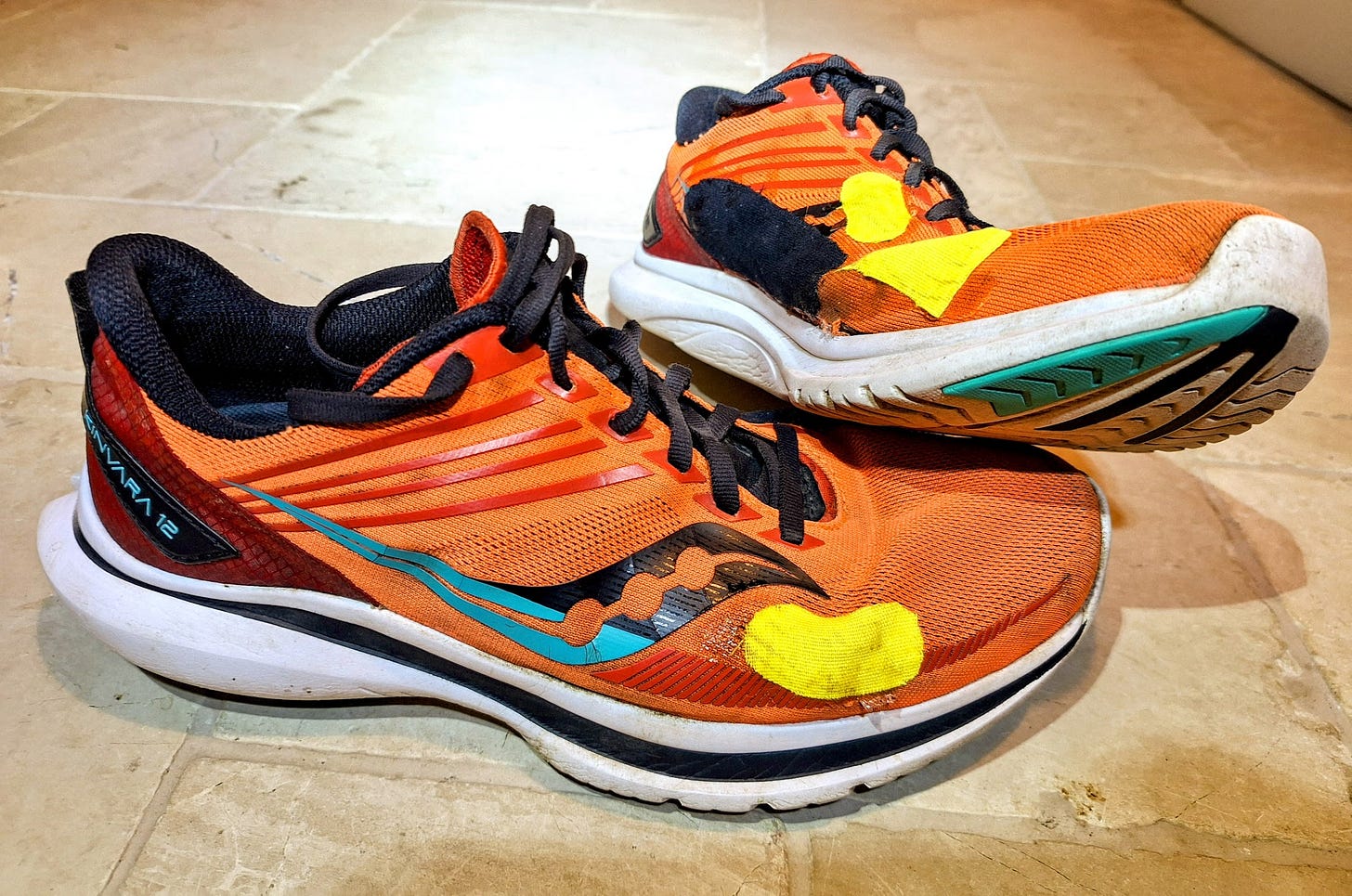Black Shoeday
The battle between sustainability and consumption is real
Black Friday is hardly over, and already we’re inundated with adverts imploring us to fill Christmas stockings, treat one another and indulge our desires this festive season. “Hark!” the Herald Angels sing, “better buy this shiny thing”.
I can’t remember seeing a Christmas ad reflect on the sustainability of all this, and the looming environmental disaster that awaits if we continue down this reckless path unabated.
The science is as clear as can be: we must reduce consumption, now. We need adverts reminding us of the 6 R’s of Sustainability, rather than the freshest 6 Running Shoes.
It’s not always that simple though, is it? Not in the real world, down at the level of day-to-day decision-making. Look, I’ll come clean. I bought some new running shoes last week.
Did I need them? According to the 6 R’s of Sustainability… it’s complicated.
The shoes were for an extreme race with pretty extreme conditions. I already had plenty of shoes that would have passed the race’s kit check. However, they weren’t ideal for the terrain & conditions, and might have risked me DNF’ing.
Perhaps I could have used one of the 6 R’s of Sustainability - Rethink - and found a workaround that didn’t involve buying a brand new pair. For example, perhaps I could have found a pair second-hand.
What do you think - am I a hypocrite, blogging about reducing consumption on the one hand, while placing online orders with the other?
Where do we draw the line between what we need and what we want? Upon who does the burden of responsibility fall to solutionise for sustainability, within the framework of a neoliberal market capitalist economy?
The best we can do is be clear on our values, and be critical thinkers every day. Question ourselves relentlessly, seeking to maintain logical consistency between our values and our actions.
As I sit staring at my contentious pair of shiny new daps, right next to them I can see a pair I’m rather more proud of. My Saucony Kinvara 12s.
I bought these back in March 2022. Since then, I wore them two hundred and twenty two times. They recently passed their third megametreversary for covering in excess of 3,000km.
As you might expect, after so many km’s, they were a little worse for wear. Their uppers had gaping holes providing more ventilation than the manufacturer intended. Their treads were, in places, flat. And whatever spring & cushioning Saucony’s PWRRUN foam midsole used to provide was long gone.



Rather than use the massive milestone as an opportunity to retire them into the bin (and buy some fancy-shmancy new ones with spring and cushioning and grip and all that dandy stuff in the adverts), I decided to use those one of those 6 R’s of Sustainability. I’d try to repair them.
Repairing shoes was brand new to me, so I needed some help. The Green Runners (of which I’m a member) have a neat guide to shoe maintenance, and that directed me to the Pair Ups upper repair process.
My primary goal was to consolidate and strengthen the uppers, stopping those huge rips that ran half the length of each shoe from spreading and tearing the shoes apart.
Pair Ups recommended some K-tape and some strong flexible glue. You might already have some, but I didn’t, so I bought one of their Lite Shoe Repair Kits for £10. It came in compostable packing and was quite clearly prepared & dispatched with love.
How cool’s that?
Reading through the instructions, I could tell that my old shoes were frankly a bit knackered to undergo the process as they were. They’d need some extra TLC.
I started by giving them a good scrub-up, so the glue would have a solid surface to attach to. They looked much more vivacious after their spa day! I left them to dry for about a week to make certain there was no residual water that could affect the repair.
Then I set about consolidating those large rips by sewing them together using a needle and thread. I figured this only needed to hold the material together long enough for the glue to bond; but nonetheless, I tried to do a decent job, to make the thread a structural repair in and of itself.


As you can see, I’m not an accomplished sewer (and in my defence, it can be quite tough to force a regular needle through a shoe’s upper). Fortunately the mess would get covered up by the patches anyway.
With all the prep done, I could finally get to the patching itself. This was really simple. Essentially, cut out a patch, squeeze glue onto the shoe and onto the patch, place the patch and use the scraper to smooth it out. The patches slide easily over the glue, and they also stretch, so they’re pretty forgiving of mistakes in placement.



Okay, so I made a bit of a gluey mess of this too. But the more glue, the stronger the repair, right?
After a couple days of drying, it was job done! My 3,000km+ Kinvara 12s were renewed, rejuvenated, totally unique & ready to run another megametre or so. Awesome!
Is this virtue-signalling? Am I a hypocrite for buying new daps?
What I do know is I’ll keep running in my newly patched-up Kinvaras. That’s something I’ll take way more pride in than any fancy shmancy new shoe.
Even if they do look like a five year old has had at them with their new art set 😊
#3000kmtoinfinity / #runwithjoy / The Green Runners / Pair Ups






Thank you for this amazing write up. 🙏🏻